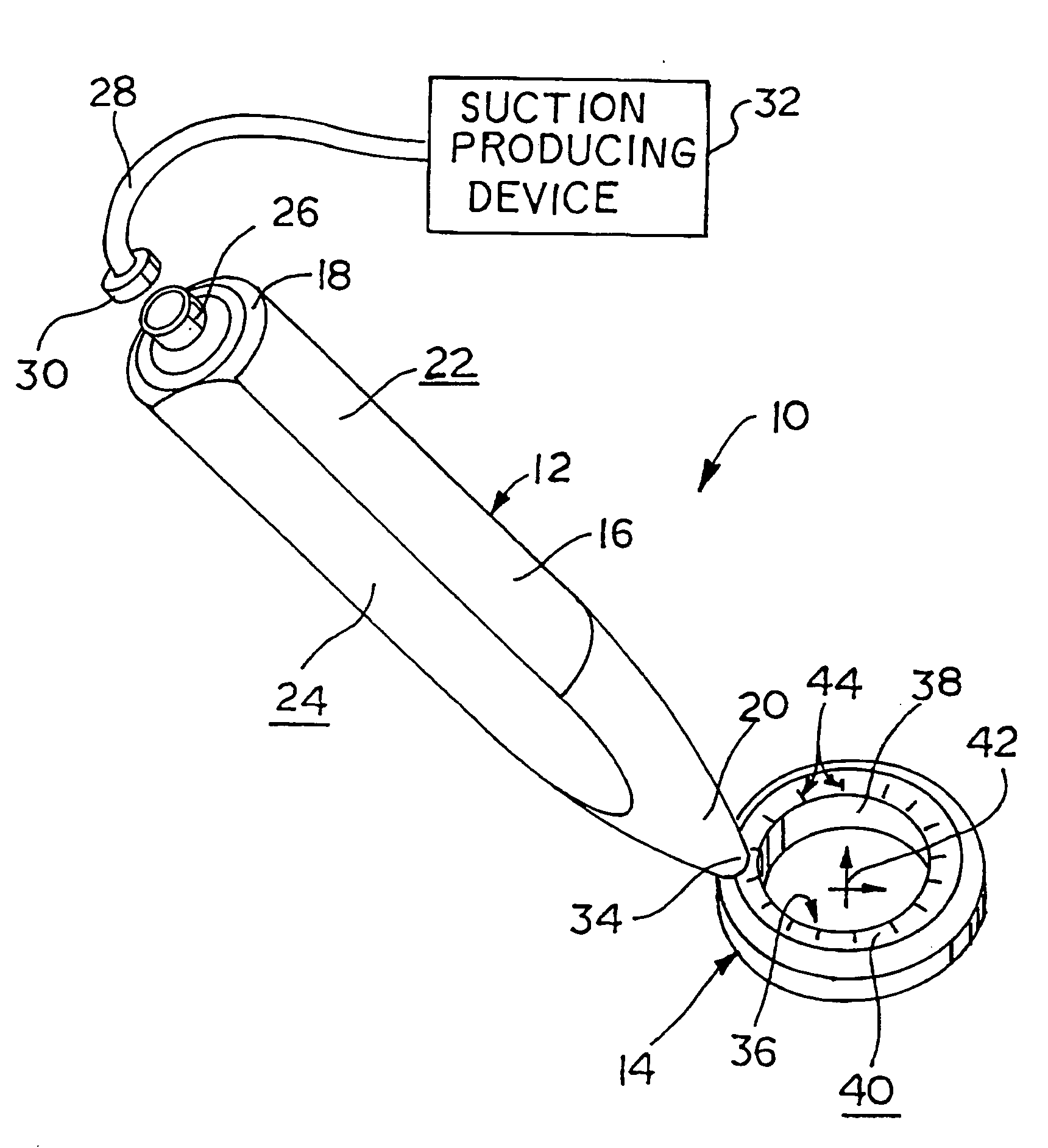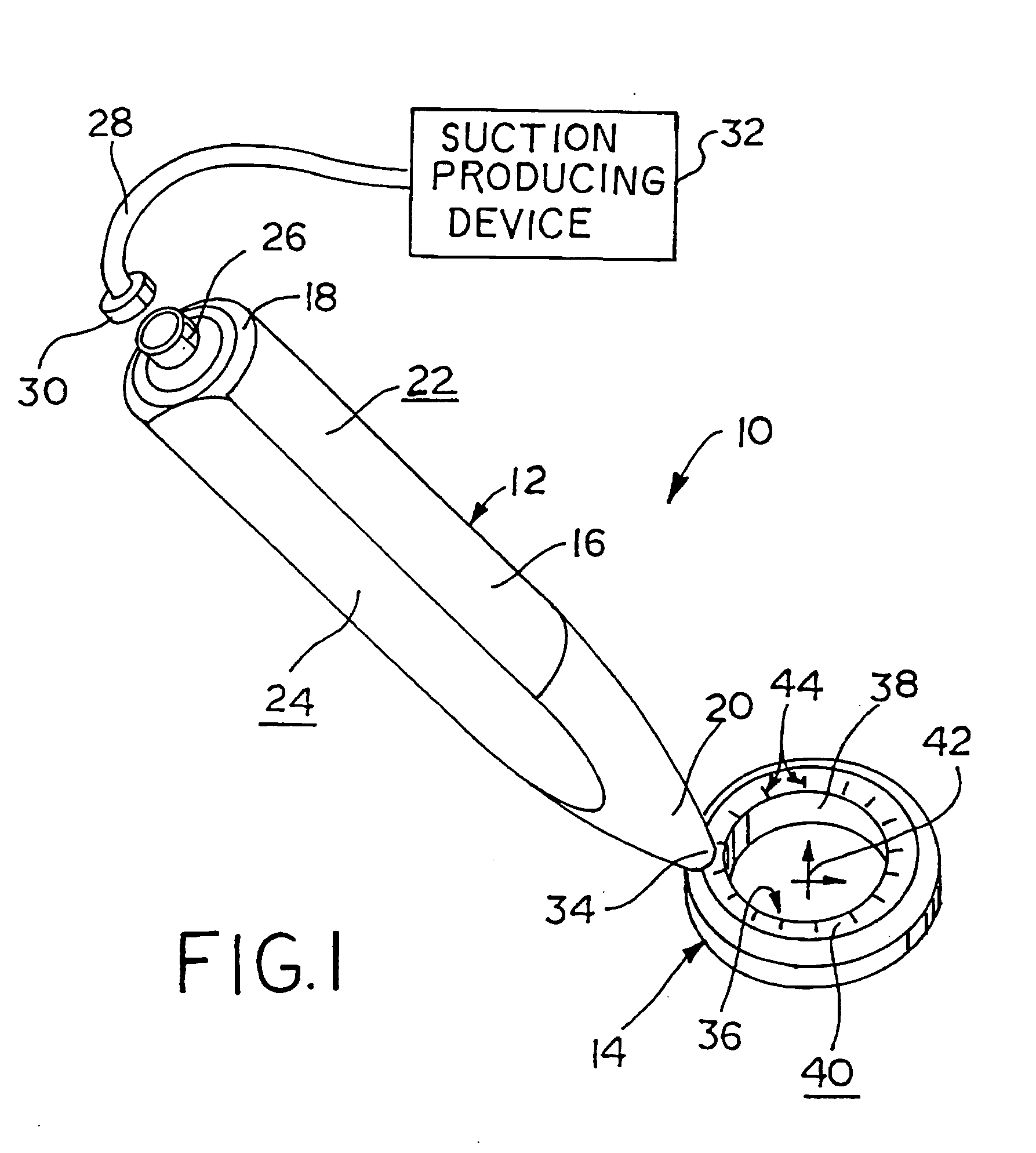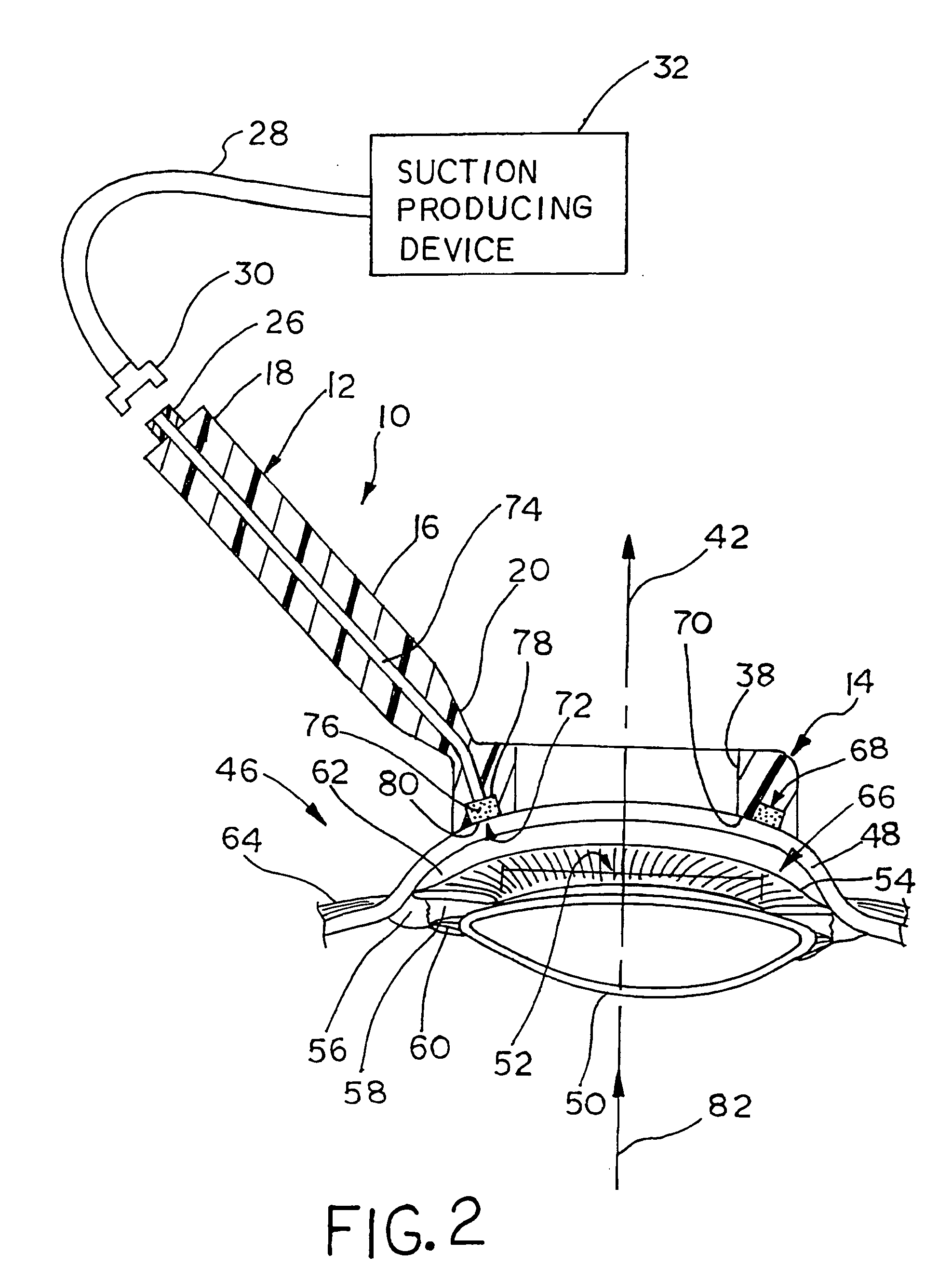Fixator with membrane
- Summary
- Abstract
- Description
- Claims
- Application Information
AI Technical Summary
Benefits of technology
Problems solved by technology
Method used
Image
Examples
Embodiment Construction
[0033] Referring to FIG. 1, a fixator 10 constructed in accordance with one embodiment of the present invention that is adapted to be releasably secured to the cornea of an eye is illustrated. The fixator 10 is preferably constructed of a rigid polymer material such as, for example, a plastic. In such an embodiment wherein the fixator 10 is formed from inexpensive and readily available materials, the fixator 10 is completely disposable. The disposable nature of the fixator 10 guarantees that a sterile device is used for each new patient. This ensures that diseases, such as bovine spongiform encephalopathy (BSE), and the like, are not transmitted and / or are prevented. In other embodiments, other materials may be used to construct the fixator 10.
[0034] As depicted in FIG. 1, the fixator 10 comprises a handle 12 and a body 14. The handle 12 is a generally cylindrical member extending upwardly and radially outward from the body 14. The handle 12 is preferably angled from the body 14 by...
PUM
 Login to View More
Login to View More Abstract
Description
Claims
Application Information
 Login to View More
Login to View More - R&D
- Intellectual Property
- Life Sciences
- Materials
- Tech Scout
- Unparalleled Data Quality
- Higher Quality Content
- 60% Fewer Hallucinations
Browse by: Latest US Patents, China's latest patents, Technical Efficacy Thesaurus, Application Domain, Technology Topic, Popular Technical Reports.
© 2025 PatSnap. All rights reserved.Legal|Privacy policy|Modern Slavery Act Transparency Statement|Sitemap|About US| Contact US: help@patsnap.com



